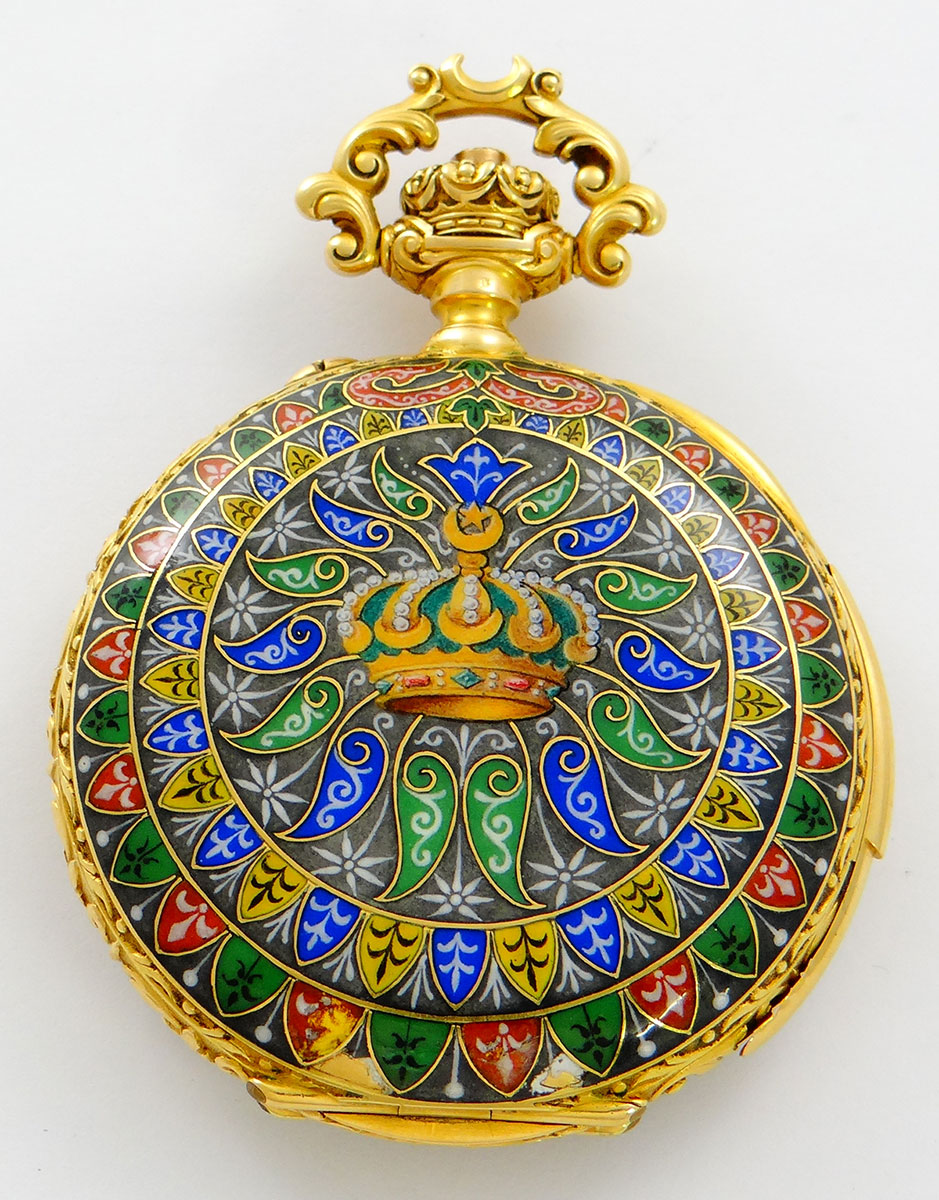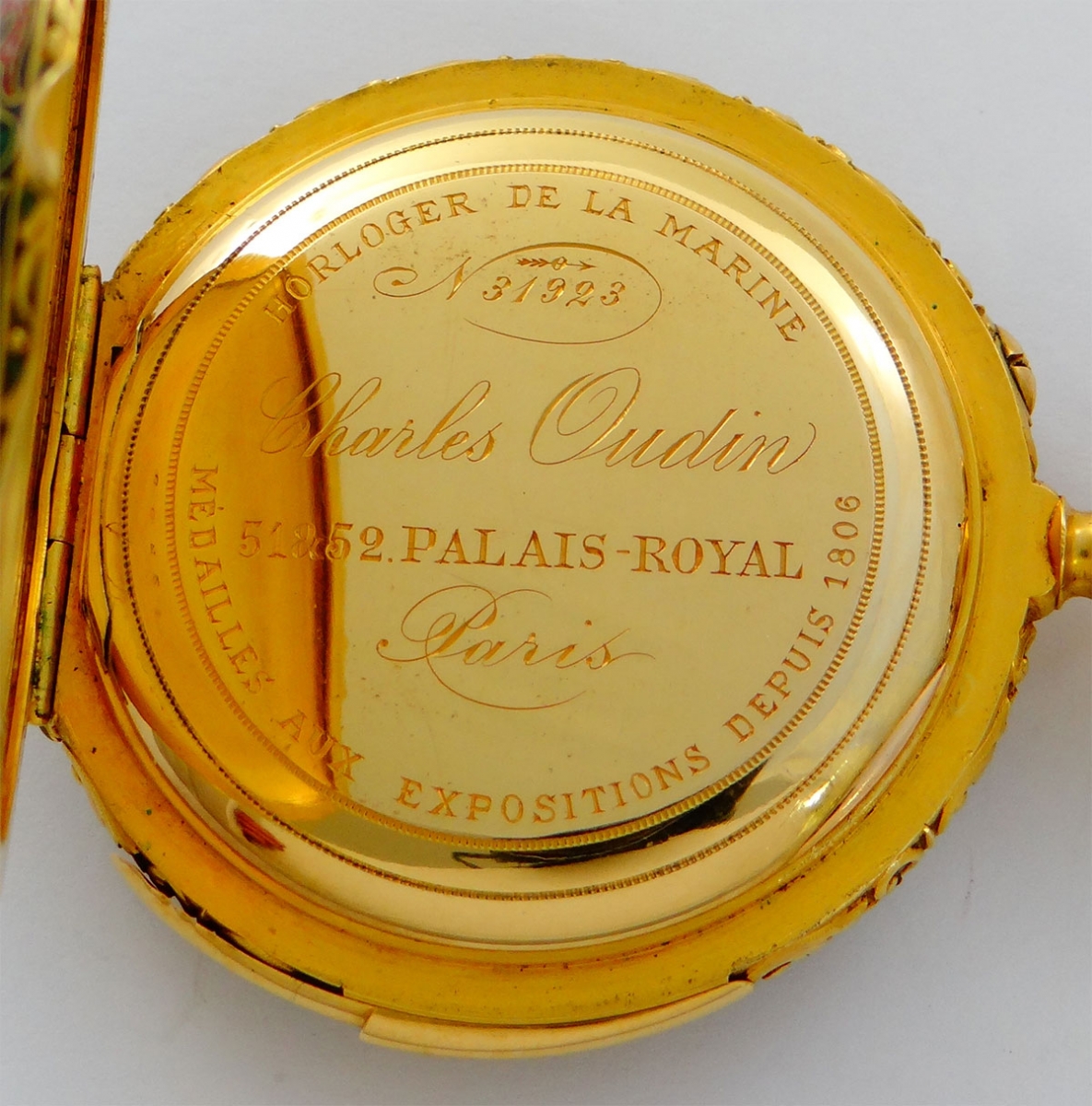The sultan's pocket watch: a case of Japanese wartime robbery
<p>In colonial days the Sultanate of Pontianak on the south western coast of Kalimantan was an important state, among other reasons because its Sultan Mohammed Alkadrie (1895-1944) was a staunch supporter of the Allies during the Japanese occupation (1942-1945). Japanese troops came to this town on the Kapuas River early in 1942, and a few months later all of the former Netherlands Indies was occupied. But not everyone meekly accepted their fate, and in the Pontianak area some resistance was organised by local Dayaks, some troops from the Raj, and men of the Indies Civil Service. The Japanese decided to take radical action and the Japanese Navy Secret Police [<em>Tokkeitai</em>] hunted down most members of the regional ruling Houses, as well as the social elite in West Kalimantan. The Sultan of Pontianak along with his three eldest sons and 22 other male family members of his House were taken prisoner. The ladies of the House offered the invaders all the treasures they possessed and pleaded for their relatives’ lives. To no avail. The old gentleman was tortured, forced to watch the beheading of his dear relatives, and eventually beheaded himself. The Japanese Navy then went on to ransack the Royal Treasury as well as rob all individual citizens of their possessions. No Japanese naval officers have ever faced court martial for these war crimes.</p>
From all members of the Pontianak Royal House only Prince Hamid (1913-1978; also known as Max Alkadrie in social circles) survived this full scale murder because he, having been educated at the Royal Netherlands Military Academy, had become a POW and was imprisoned on Java. After the end of the War, the Lieutenant Governor General of the Netherlands East Indies, Dr Hubert van Mook, asked Prince Hamid to accept the Crown, which he did after due deliberation as Sultan Hamid II. The new Sultan was very much involved in the lengthy post-war Independence deliberations of 1945-1949, and supported the Dutch attempts to create a federal United States of Indonesia.
Shortly after the Japanese occupation came to an end, Sultan Hamid II wasted no time in calling upon General Douglas McArthur to take measures in Japan, to have the stolen jewels returned to their rightful owners. Unfortunately, the documents and photos regarding the treasures had also been destroyed or stolen in 1944. Sultan Hamid II still managed to produce an (incomplete) list of what his family had lost, which included two gold tiaras set with diamonds and other gems; eight ceremonial creeses with golden sheathes and hilts; a gold Sword of State; 21 pairs of gold bracelets set with gems; 60 necklaces of the same; 150 gold rings and 14 pairs of earrings set with gems. General McArthur instructed his Monuments Men unit of art experts, to immediately trace the treasures and have them returned. They had some success with a tiara, a gold hanger and brooch, and two gold bracelets.
In May of 2017, however, a surprise find revived the matter of wartime theft, when a gold pocket watch was put up for auction by the Jones & Horan Auction Team in Goffstown (NH, USA), for US$8,000-12,000. The vintage pocket watch was illustrated in the auction catalogue and came with quite a detailed description. The reverse cover, decorated in multi-coloured enamel inlay, and the diamond-studded crown of Pontianak was prominently featured. The accompanying text mentioned that though no documentary proof was available, the watch may very well have been a gift to the late Sultan Mohammed of Pontianak. Indeed it was! Watches like this one had been gifted to Indonesian rulers who attended the 1938 Jubilee of the Dutch Queen Wilhelmina, among them Sultan Mohammed; the decoration may have been added later.
Sultan Mohammed’s only surviving grandchild Max Alkadrie Jr (b.1942) contacted me and others regarding this very unusual development. The auction house was instructed in writing that the watch could not be auctioned, as it was part of the Pontianak treasure stolen in 1944 by Japanese officers. Thus it was withdrawn from auction and kept safe pending further developments. On several You Tube videos of the Auction House Jones & Horan of May this year the beautifully decorated reverse of the Sultan’s pocket watch is visible on the desk and as an image in the background (www.youtube.com/watch?v=8XFHHgpwKNo).
It is normal procedure for properly established auction houses such as Christie’s or Sotheby’s, to establish contact between the legal and the present owner. However, this was not what Jones & Horan did. They asked Max Alkadrie Jr for proof; not that the watch had been Sultan Mohammed’s private property, but that it had actually been stolen in the war. Assuming that the present holder of the watch was innocently unaware of its real origins, Mr. Alkadrie provided documents from Dutch and American archives. He also noted that demanding written proof that an object had been stolen during a war is an unreasonable request. Would indeed the wartime robber have provided a receipt to the person that was robbed? And if proof was demanded of the watch having been presented by the Dutch Queen, would the consignor expect Heads of State to present one another not only an object, but also its receipt?
It would seem that Jones & Horan’s client, still unnamed, was neither willing to surrender his possession of the watch nor recognise the fact that he, by law – not to mention General McArthur’s order – is obliged to return it to the legal owner. In a move to settle the matter amiably, Mr. Alkadrie offered the symbolic sum of US$1,000, and was taken aback when Jones & Horan informed him that their client demanded US$15,000 – in payment for an object that belonged to an old Sultan tortured and beheaded during the Japanese War, and which was now logically being claimed by his grandson.
Mr. Alkadrie let it be known that he was not prepared to entertain such immoral and preposterous demands, and is now preparing to enter the pocket watch in the National Stolen Art File as kept by the FBI, or perhaps the international Art Loss Register. Maybe, more than 70 years after it was stolen during the Second World War, Sultan Mohammed’s cherished watch may one day return, finally, to where it belongs.
With thanks to Max Alkadrie Jr., Robert Egeter van Kuyk and Dutch Culture Amsterdam.
Art-historian Louis Zweers is Research Fellow at KITLV. He received his PhD degree at the Department of History, Culture and Communication of the Erasmus University Rotterdam in 2013. His current research focuses on the robbery and plundering of cultural heritage in the former Dutch East Indies/Indonesia 1942-1957. His book will be published in Spring of 2019 by Boom publishing house, Amsterdam, in conjunction with an exhibition and symposium (louis.zweers@ziggo.nl).

